Registration of public notification
If you register your e-mail address, we will notify you when the latest issue is published. If you wish, please register from the registration form. To delete your registration, please visit here.
April 2022 No.94
Featured Topic: Contributing to a Zero-Carbon Society through Technology Development
Efforts toward a Zero-Carbon society to curb global warming have become a major trend worldwide. Back in October 2020, the Japanese government proclaimed the target of achieving Carbon-Neutral by 2050, referred in “Green Growth Strategy,” with a policy to make concerted efforts on the development of renewables and hydrogen energy sources, namely “carbon neutral innovation,” with aims to strengthen the competitiveness of Japanese industry. In addition, a “Green Innovation Funding” was founded to promote it.
1.3 MB
In an effort to create a decarbonized society, Japan, Europe, and the United States are shifting their main energy sources from fossil fuels to renewable energy sources such as solar power. However, the output of renewable energy sources fluctuates depending on weather conditions, making it difficult to provide a stable supply of electricity. As a solution to this problem, efforts are being made to introduce distributed power sources such as small- and medium-scale solar power generators and storage batteries on the consumer side to level out the output fluctuations of renewable energy. As renewable energies are introduced in large quantities in the future, energy management systems will play an important role in integrating distributed power sources and operating them stably and efficiently. This paper discusses a next-generation energy management system that organically links distributed power sources and controls them in an integrated manner. We first discuss the technical challenges of integrated management of distributed power sources, and then summarize the prior technological trends toward the solution of these challenges. Finally, the features and application areas of our energy management system “sEMSA-μGrid” are explained.
2.3 MB
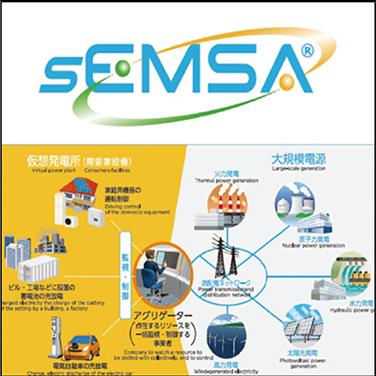
2.3 MB
With efforts to realize a carbon-neutral and sustainable society accelerating on a global scale, Nissin Electric Co.,Ltd. has launched a new medium- to long-term plan, VISION 2025, aiming to contribute to “the realization of a sustainable global environment and a society in which anyone can play an active role” through six growth strategies. Among them, Smart Power Supply Systems (SPSS) are a solution business that supports our growth strategies in the environment and energy fields. This paper introduces the recent efforts for SPSS.
5.2 MB
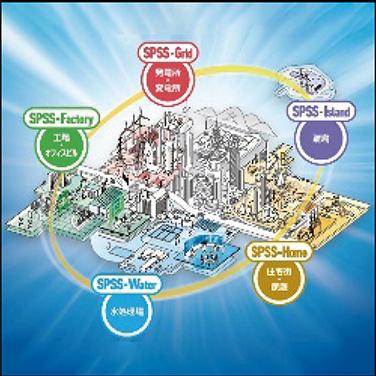
5.2 MB
With the spread of solar power generation as a renewable energy source and the deregulation of electricity, attention has been focused on the realization of energy management utilizing IoT, such as local production and local consumption of energy and the development of storage batteries and EV-based power storage. To solve problems in the energy field using IoT technology, Nissin Systems Co., Ltd. primarily provides gateway devices, software, and services using cloud systems to develop business for general consumers. This paper introduces the technical contents of the area aggregation cloud system built in the island-and-islets-type Smart Community Actual Positive Business in Miyakojima, Okinawa.
2 MB
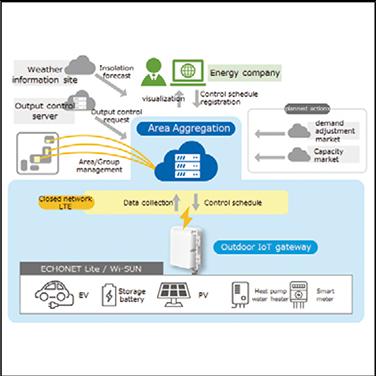
2 MB
It is very important to understand the current that flows in a polymer material when a voltage is applied to it because it reflects the physical phenomena that occur in the material. To measure and analyze the phenomena, we have been studying the direct current integrated charge (Q(t)) method in which integrated currents are measured and analyzed as the amount of charge. Here, the ratio of the charge immediately after the application of square wave voltage Q(0) and the charge tm after the application of voltage Q(tm) is introduced as the charge ratio Rc=Q(tm)/Q(0). The physical meaning of Rc is discussed, and it is shown that Rc can be expressed by a simple equation between the relaxation time of the material and the measured time of the material in an ideal state of electrical conduction. These relations were used to analyze the conductive state of cross-linked polyethylene.
1.9 MB
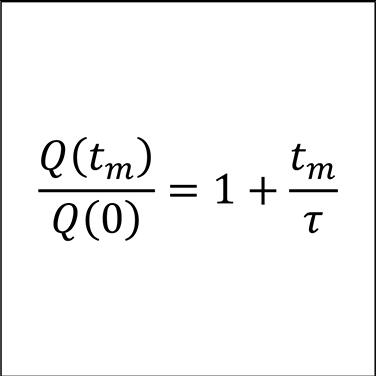
1.9 MB
The reduction of greenhouse gases has become an urgent issue globally, and thus the introduction of offshore wind power generation is progressing. A higher voltage requirement (at 66 kV-class) for submarine cables is due to increased power output from wind turbines and structural changes to the wet design that omits the water-impervious layer to improve manufacturability, cost, and workability. However, removing the water-impervious layer increases the risk of breakdowns due to insulation deterioration namely “water trees.” A study has been carried out on water tree retardant insulation and it has been confirmed that the new submarine cables meet the standard (CIGRE TB722) established in 2018 even with the omission of the water impervious layer. Considerations were made for a water tree retardant insulation that can be used under high voltage exceeding 66 kV-class in order to cope with long-term operation and higher power output from wind turbines in the future. This development will contribute to the promotion of offshore wind power generation.
1.3 MB
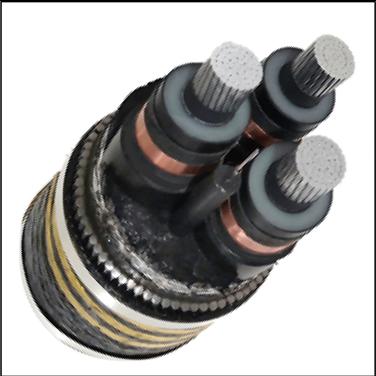
1.3 MB
The cross-linked polyethylene (XLPE) cable has been used for DC transmission lines. We have been developing the DC XLPE cable for a few decades, and proved its quality and reliability through the research and development process. In 2012, we delivered the cable to Electric Power Development Co., Ltd. for its DC 250 kV transmission project, making it the world's highest voltage DC XLPE cable at that time and the first one to be applied to a line commute converter system. Following the project, we successfully completed two new projects: the 250 kV transmission project of Hokkaido Electric Power Co., Inc. and the 400 kV transmission project of NEMO Link Ltd. Our DC XLPE cable has an allowable continuous conductor temperature of 90 degrees Celsius, which is equivalent to the conventional AC XLPE cable, and withstands polarity reversal of voltage. This cable will meet the various needs of DC transmission that are expected to increase in the future.
2.9 MB
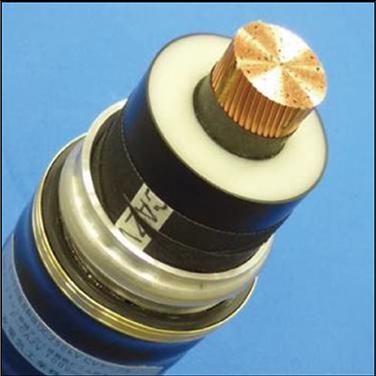
2.9 MB
Stable electric power supply is vital for today’s society. However, line faults still occur because of lightning strikes or other causes. Line faults must be located and repaired as quickly as possible. In particular, in the case of line faults where overhead and underground transmission lines are connected, recovery measures differ by location. Thus, locating the line fault and determining whether the line fault is on the overhead or underground transmission lines is critical for early recovery. We have developed the Fault Sector System that identify line faults based on the information from current sensors installed on overhead ground wires and underground power cables. This system has been fully implemented in electric power companies. This paper reports on the outline of the system.
3.4 MB
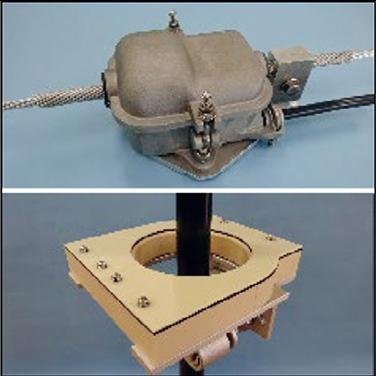
3.4 MB
In the maintenance of underground transmission lines, there is a need to shift from time-based maintenance, where maintenance is performed manually and periodically, to more advanced condition-based maintenance, where maintenance is performed efficiently when necessary, through the promotion of digital transformation using IoT and AI to achieve smart maintenance. One of the challenges in realizing IoT has been the difficulty in developing an inexpensive, safe, and reliable communication method to acquire sensor information about cables installed in conduits, which account for the majority of underground power transmission facilities. This paper describes the development of a system that collects sensor information and camera images using a 66-kV XLPE cable installed in a conduit manhole, in collaboration with TEPCO Power Grid, Inc.
2.2 MB
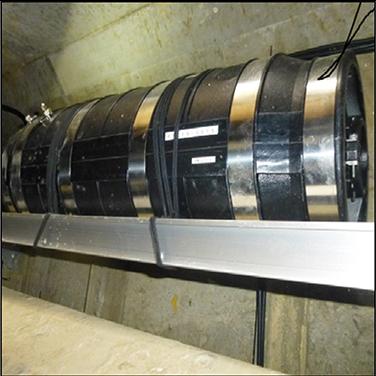
2.2 MB
The span length of an overhead transmission line crossing a strait can exceed 1000 m. In order to suppress the sag of the line, higher strength conductors are required than those used for the wland part. High-strength thermal-resistant aluminum alloy wires with a conductivity of 55% IACS are used for conductors passing through such spans, but their conductivity is lower than that of the wires used in the land part (60% IACS), which limits the transmission capacity. This time, in collaboration with J-Power Transmission Network Co., Ltd., we have developed a new type of high-strength thermal-resistant aluminum wire with an improved conductivity of 58% IACS. This paper reports on the development of technology and examples of new conductor design.
1.3 MB
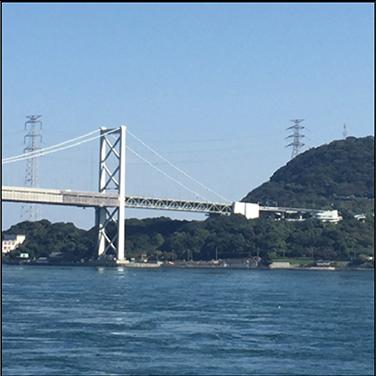
1.3 MB
Nissin Electric Co.,Ltd. has developed a technology that uses artificial intelligence to predict the chemical oxygen demand (COD), total nitrogen content (TN), and total phosphorus content (TP) in discharged water two hours after measurement, based on the past measurement data accumulated in the monitoring and control equipment of sewage treatment plants. The technology enables maintenance staff to change the operation of sewage treatment before the water quality deteriorates. This prevents the deterioration of the water quality without effort.
1.7 MB
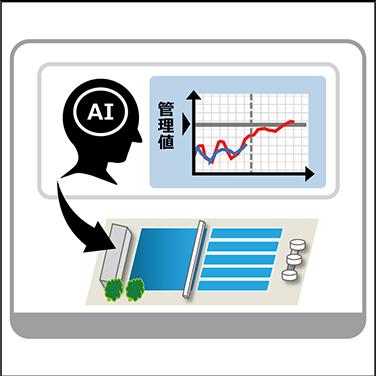
1.7 MB
Many motor vehicle manufacturers around the world are shifting from the vehicle sales business to the mobility service business. Participating in the connected business area, the Information Network R&D Center is developing a prototype solution for managing and analyzing in-vehicle devices, in-vehicle software, and in-vehicle sensor data together with the Systems & Electronics Division, CAS-EV Development Promotion Division, and AutoNetworks Technologies, Ltd. This paper introduces our efforts in commercializing fleet management systems for connected vehicle in the future.
2 MB
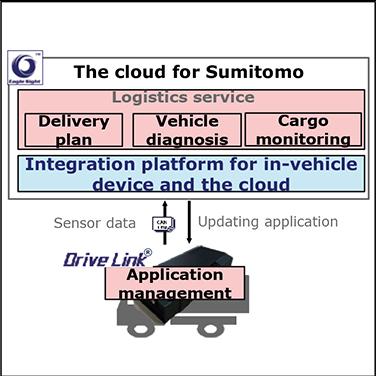
2 MB
Traffic congestion occurs at intersections with fixed time signal control without vehicle detection sensors. This is partly because the signal control parameters have failed to respond to changes in traffic demand. Therefore, we have developed a technique to detect and analyze congested intersections where the situation will be improved by retiming the signal control parameters. Using this technique, we confirmed that it is possible to identify congested intersections without vehicle detection sensors and analyze traffic conditions.
2.5 MB

2.5 MB
With the launch of 5G services and AI applications, the amount of data flowing into networks is increasing. While network devices are required to have higher bandwidth, they are also required to be smaller and denser due to limited installation space in urban areas. We have developed a small 200G OTN optical transmission device to improve the accommodation efficiency. This device uses digital coherent optics to achieve long-distance and high-density transmission through wavelength multiplexing. This paper reports the transmission distance and the traffic restoration time in line protection using the device.
1.7 MB
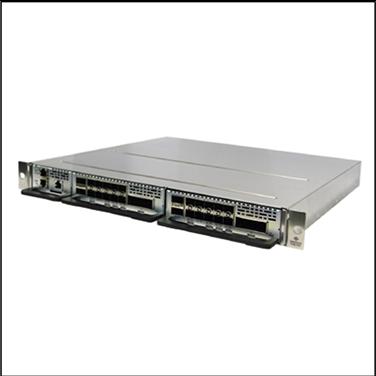
1.7 MB
This paper describes the structure, characteristics, and workability of the small-diameter 6912-fiber-count cable with 200 μm Freeform Ribbon fibers for data center applications. In the 200 μm Freeform Ribbon, fibers meet and split out in turns in a longitudinal and transverse direction, thus allowing high fiber density and mass fusion splicing. Having a non-preferential bend axis, the cable can easily be installed in space-constrained areas. By optimizing the structure and improving the micro-bend resistance of the fiber, we have realized a reduction of the cable cross-sectional area by about 34% compared to the conventional cables. Furthermore, while the conventional cable was pulled into a 2-inch pipeline, the small diameter 6912-fiber-count cable can be applied to a 1.5-inch pipeline, with the same pull-in tension as before.
3.5 MB
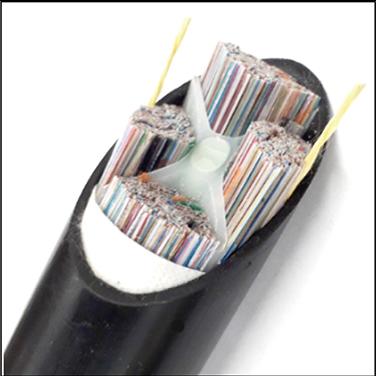
3.5 MB
Three types of individual core pump multicore erbium-doped optical fiber amplifiers with different core coupling have been demonstrated. These amplifiers showed better power consumption efficiency, such as 24% for a coupled 4-core optical fiber amplifier. Crosstalk is an important parameter in uncoupled multicore optical fiber transmission. The crosstalk of the uncoupled 4-core optical fiber amplifier is -43 dB, which is comparable to the lowest crosstalk in previously reported multicore optical fiber amplifiers. The mode-dependent loss, an important parameter in coupled multicore optical fiber transmission, corresponds to the core-dependent gain of uncoupled multicore optical fiber amplifiers and weakly coupled optical fiber amplifiers. The core-dependent gain of the weakly coupled 7-core optical amplifier is 0.52 dB, which is comparable to the smallest mode-dependent loss in previously reported multicore optical fiber amplifiers.
1.7 MB
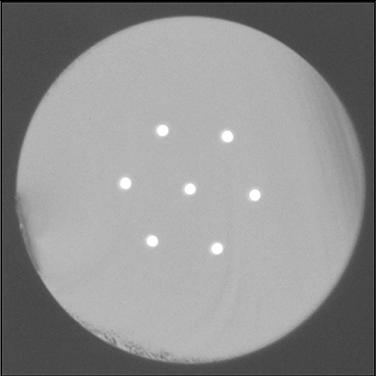
1.7 MB
To address the needs for increasing data traffic resulting from the widespread use of advanced mobile terminals and the diversification of internet-based services, over 100-Gbit/s optical transceivers have been used in optical communication systems of data centers. Furthermore, there has been a strong demand for extended reach connection between data centers. We have developed a new compact receiver with a semiconductor optical amplifier for 40 km/80 km transmission. This paper describes the design and typical characteristics of the new optical receiver.
1.1 MB
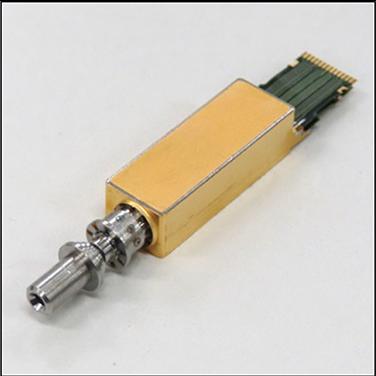
1.1 MB
Optical receivers with intensity-modulation direct detection strongly require ultra-high-speed and high-responsivity performance to 100 GBaud-class toward the next-generation 800 Gbit/s data center networks. This paper demonstrates wide-bandwidth and high-responsivity performance of the InP-based waveguide photodetector integrated with the spot size converter having no polarization dependence. We also introduce the waveguide avalanche photodiodes.
1.6 MB
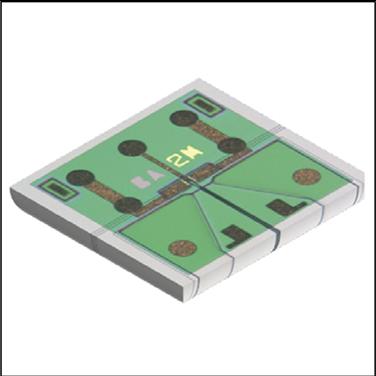
1.6 MB
Exotic alloys, such as nickel alloys, cobalt alloys, and titanium alloys, are widely used for equipment and parts in the aircraft and automotive industries due to their superior heat and corrosion resistance. There has been a growing demand for the machining tools for these alloys. We released the AC5015S and AC5025S for exotic alloy turning, which use the new physical vapor deposition (PVD) coating technology. Meanwhile, there is a strong need for cutting tools that enable high-efficiency machining. To satisfy these demands, we have developed a new exotic alloy turning carbide grade, AC5005S, which shows excellent wear resistance, plastic deformation resistance, and fracture resistance in high efficient machining. Together with the existing AC5000S series, the new AC5005S will reduce machining costs in a wide range of exotic alloys turning operation.
2.3 MB

2.3 MB
Analysis of the structure and composition of materials is essential for product development and quality improvement. The objects of analysis may include semiconductor substrates, plating, and resin surface finishes, specifically the depth profile of chemical species near the surface, and many other determinants of product characteristics. Nondestructive evaluation of depth profiles for individual chemical species in unknown samples is difficult with existing analytical methods. Thus, to meet this need, we have developed a new data analysis technique for angle-resolved X-ray photoelectron spectroscopy (ARXPS), dubbed the maximum smoothness method (MSM). In combination with obtaining depth information using the three XPS systems available to our company, MSM analysis enables nondestructive evaluation of profiles at wide depth ranges. Here, we describe MSM analysis using the three XPS systems and nondestructive depth profile evaluation for a wide range of products.
2.5 MB

2.5 MB
In recent years, the electrification of automobile components/parts has been progressing with the aim of shifting to electric vehicles to realize a decarbonized society. Electrification will expand the use of by-wire control, which allows devices to be controlled by electrical signals; however, a control failure occurs if the vehicle power source, such as a lead-acid battery, becomes inoperative. Sumitomo Wiring Systems, Ltd. and AutoNetworks Technologies, Ltd. of the Sumitomo Electric Group have developed an integrated x-by-wire backup battery designed for uninterrupted by-wire control of more than one device even in the event of a vehicle power failure. The product was adopted by Toyota Motor Corporation for their Lexus NX launched in 2021.
264 KB
In recent years, there has been an increase in data processing capacity due to the widespread use of high-per-formance PCs and automatic driving systems and the communication of high-quality video data by smartphones and other devices. Therefore, printed circuit boards (PCBs) used in these products are required to be more heat resis-tant and durable than ever before. To improve heat resis-tance and durability, there has been progress in improve-ment and increase in the content of heat-resistant and heat-dissipating fillers, super-multilayering of boards, and increase in the thickness of boards, all of which make it more difficult to drill holes in boards. Specifically, it leads to increased drill wear and consequent degradation of hole position accuracy, resulting in decreased board reliability due to degraded hole accuracy and hole inner wall quality.
0.8 MB
Copyright of the paper contained in SUMITOMO ELECTRIC TECHNICAL REVIEW belongs to Sumitomo Electric Industries, Ltd.
The paper is to be used solely for private, reference purpose, and reproduction without the permission of the copyright holder is prohibited.
Meet the Authors of the SUMITOMO ELECTRIC TECHNICAL REVIEW
We at Sumitomo Electric Group are driven to pursue technological innovations to create value for a better world.
Learn more
